How Should Indian Cities Plan Their Charging Infrastructure and Electric Bus Operations?
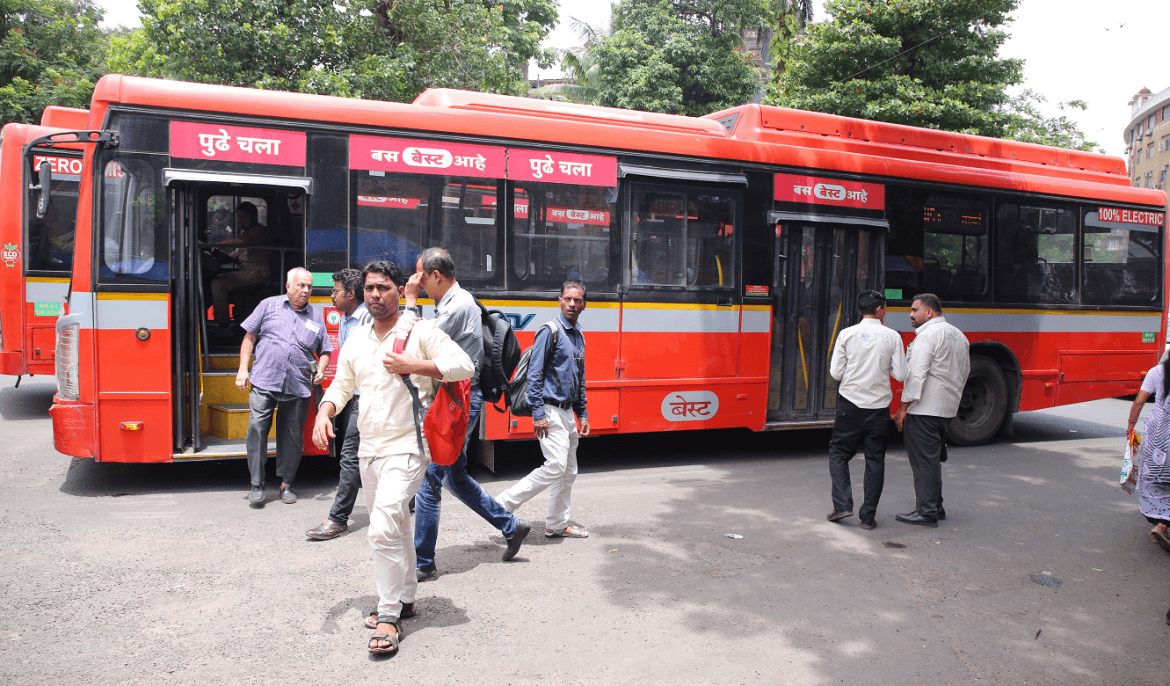
After the huge success of the Grand Challenge, state-owned Convergence Energy Services Limited (CESL), supported by WRI India, has accelerated the adoption of electric buses under phase-1 of the National Electric Bus Program with a tender for 6,465 electric buses across six States/Union Territories. As the number of e-buses increases, it is vital to understand the dynamics around range (total kilometers an e-bus can run on a single charge), charging systems and charging duration. This blog sheds light on the range requirements of e-buses on a single charge and their daily operational requirements based on recent procurement tenders and analysis of data from Ahmedabad, Bengaluru, Delhi, Mumbai, Pune and Surat. For a granular understanding, we also looked at similar datasets from global cities like Barcelona, Berlin, Copenhagen, London, Milan, Paris, Prague, Shenzhen and Vienna.
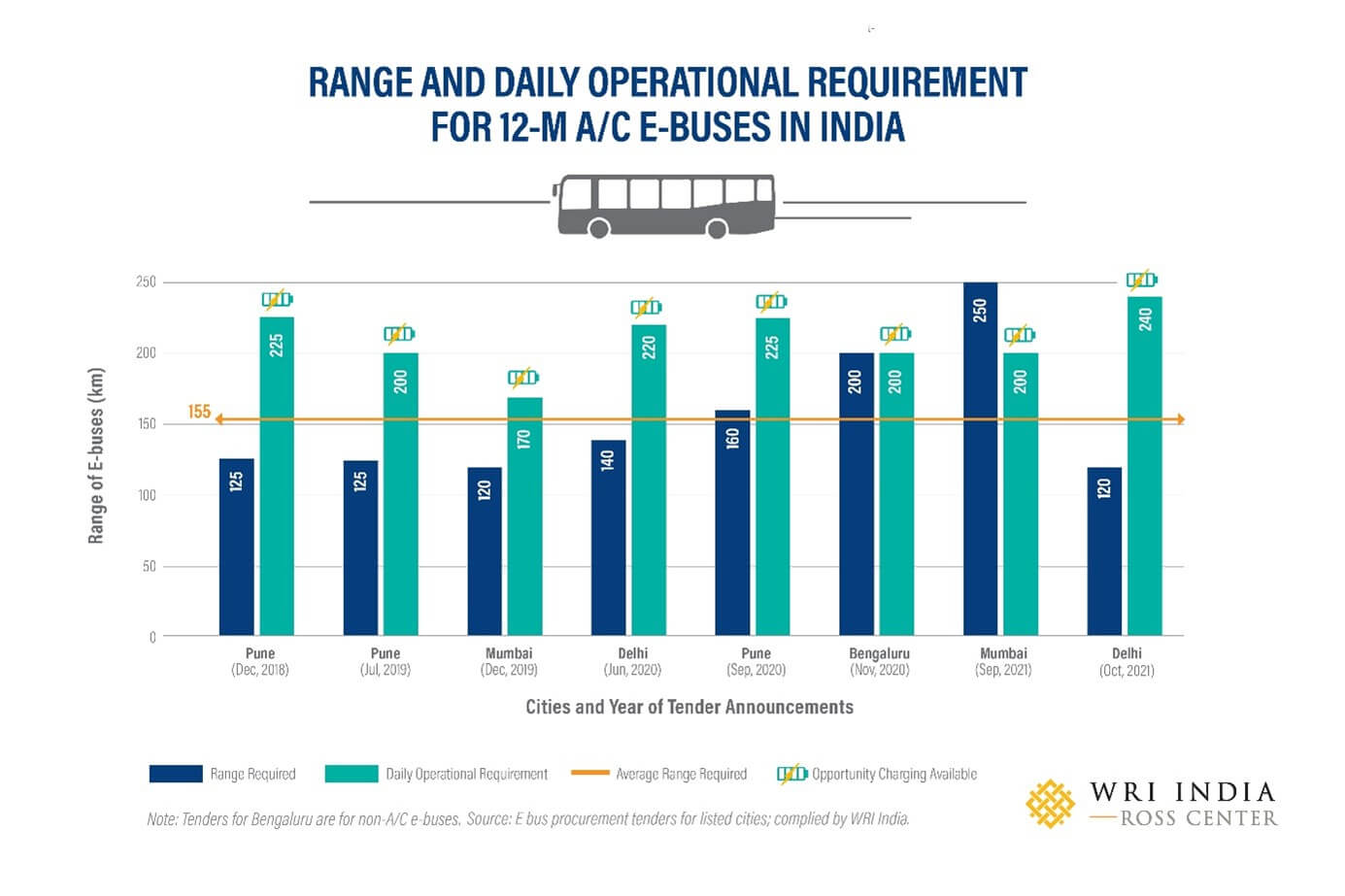
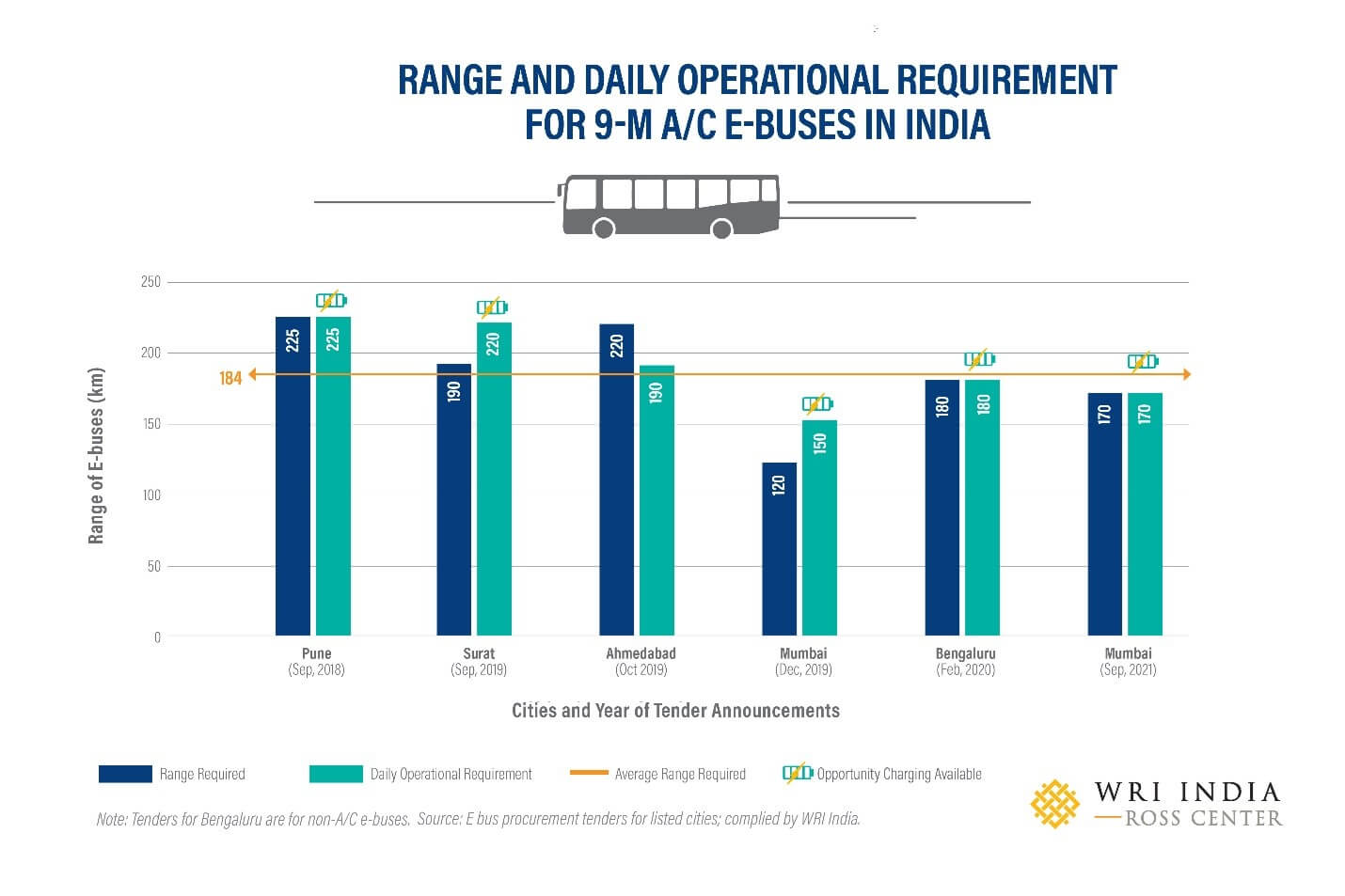
Key Observations From Recent Indian Tenders
Historically, Indian transit agencies have sought a higher range (on a single charge) for 9-meter e-buses than their 12-meter counterparts. In most cases, agencies prefer 12-meter e-buses with a lower range (on a single charge) than they need for daily operations.
In recent tenders, transit agencies have increased their range requirements from a single charge. For instance, in Mumbai’s tender for 340 e-buses floated in December 2019, the Brihanmumbai Electric Supply and Transport Undertaking (BEST) sought to procure 12-meter and 9-meter e-buses with a range of 120 km on a single charge and daily operational distance of 140-170 km. Range requirements were subsequently increased for 12-meter and 9-meter e-buses to 250 km and 170 km respectively. This change was intended to reduce dead kilometers (non-revenue kilometers) and improve bus utilization. Additionally, it was observed in the later tenders that the cost per kilometer rate was reduced by 30%, even as the e-bus range increased since the cost per kilometer is more dependent on daily bus utilization than on a single charge range.
International Case Studies
A few international cities were examined with a focus on e-bus range and operational kilometers to better understand e-bus operations globally. The range requirement in most of these cities is higher than the existing daily operational requirement with different charging systems. Other parameters like battery storage capacity, charging type and provision of opportunity charging were also studied (as shown in Table 1).
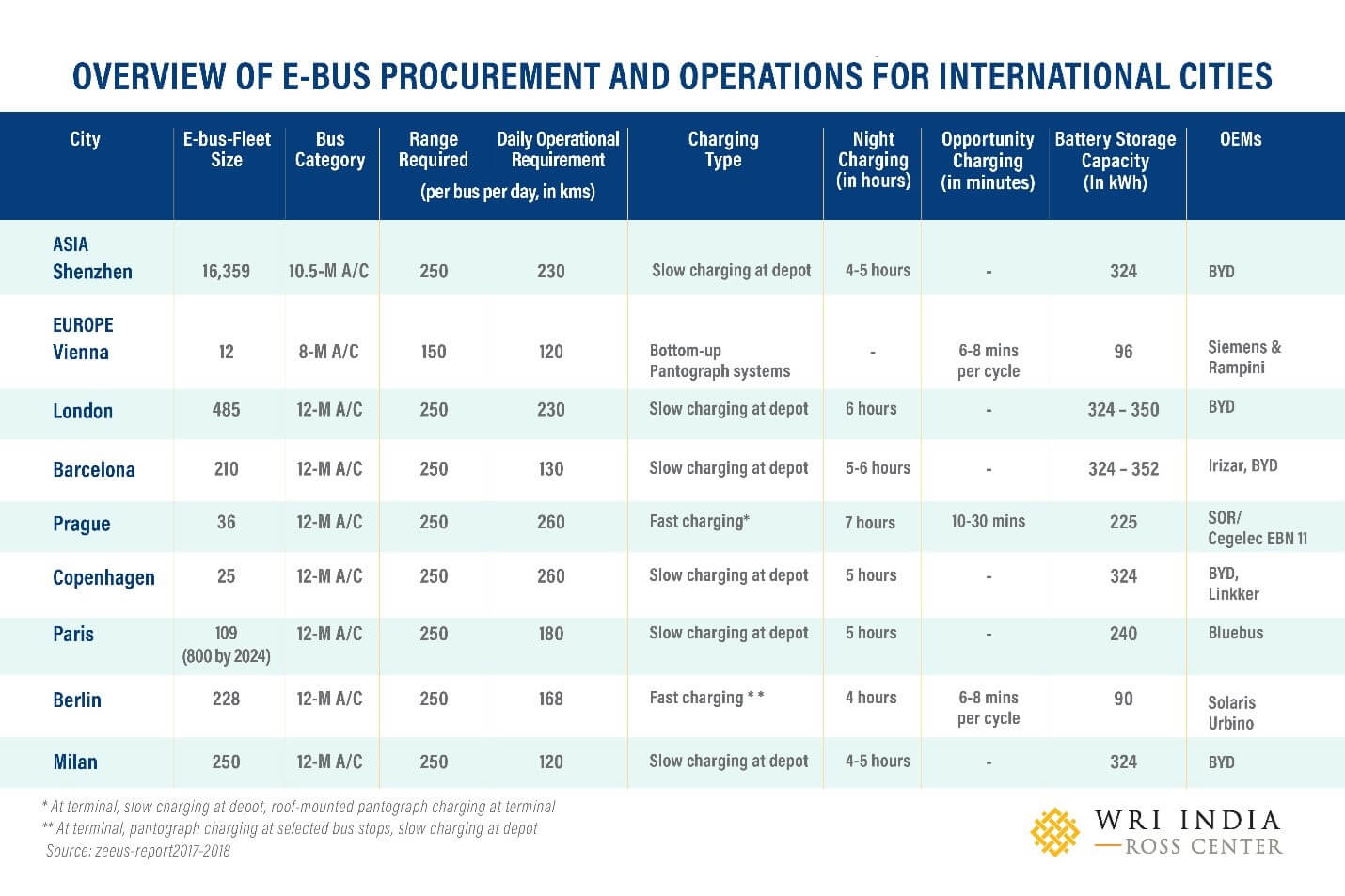
Cities with no opportunity charging: Daily range requirements of transit agencies in Barcelona, Copenhagen, London, Milan and Shenzhen are met with a battery storage capacity of more than 300 kWh with no provision of opportunity charging. Most of these cities have slow charging at depots during the night for approximately 4-5 hours, which fulfils the energy requirements for a full day of e-bus operations.
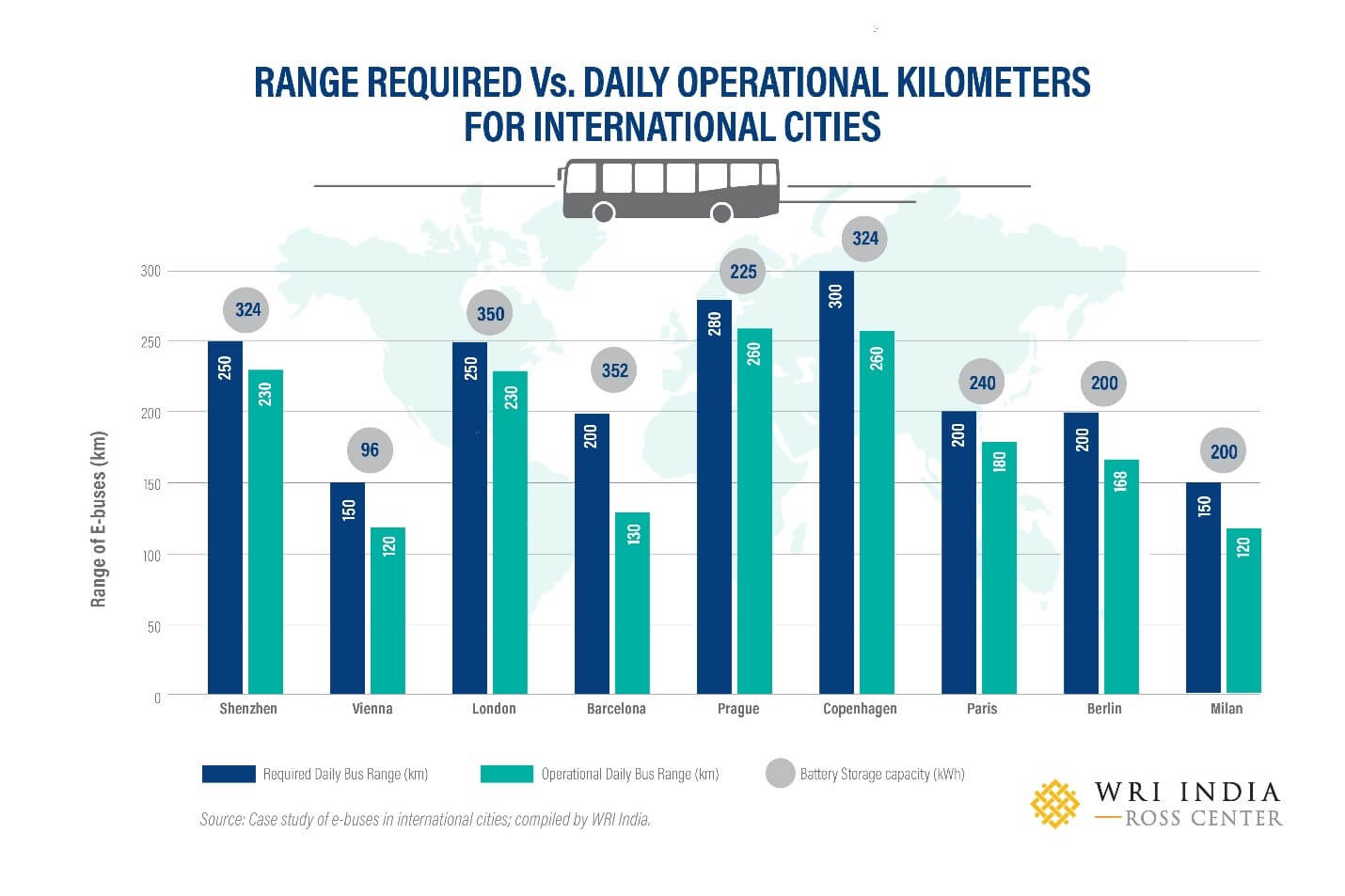
Cities with opportunity charging: Transit agencies of Berlin and Prague have opted for opportunity charging with a smaller battery capacity of 225 kWh and 90 kWh, respectively. Prague has slow charging at depots and opportunity charging with roof-mounted pantograph systems (curbside charging stations that include an overhead structure for charging) at terminals. Meanwhile, Berlin has a provision of slow charging at depots and pantograph charging at selected bus stops. Vienna has a bottom-up pantograph charging system with direct current (DC) charging at 60 kW. Berlin and Vienna have 6-8 minutes of opportunity charging per cycle, while Prague has 10-30 minutes of opportunity charging time.
To better understand e-bus operations, we looked at the operational efficiency ratio (defined as daily kilometers operated by an e-bus with a battery storage capacity) of 15 Indian and international cities. Our analysis found that a 0.7 battery storage ratio was sufficient for full-day operations.
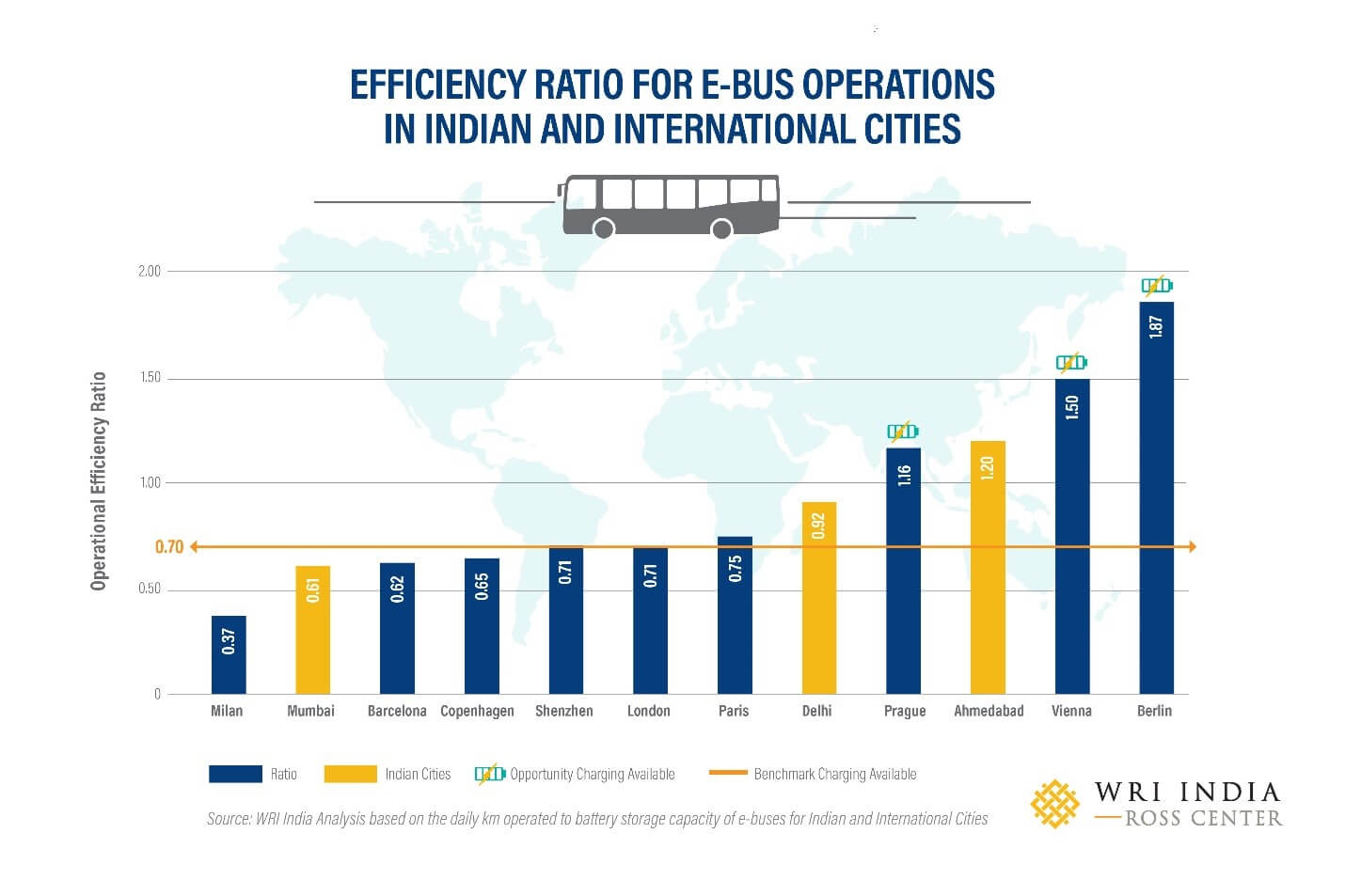
Shenzhen with a battery storage ratio of 0.7, does not need opportunity charging, while cities like Berlin, Prague and Vienna, which have an operational efficiency ratio of more than 1, have opportunity charging via a pantograph system. Therefore, it can be inferred that opportunity charging is required when the ratio of daily running (km) to battery storage capacity (kWh) exceeds 0.7. Mumbai may not require opportunity charging as it has a ratio of 0.61, but Delhi does, at 0.92.
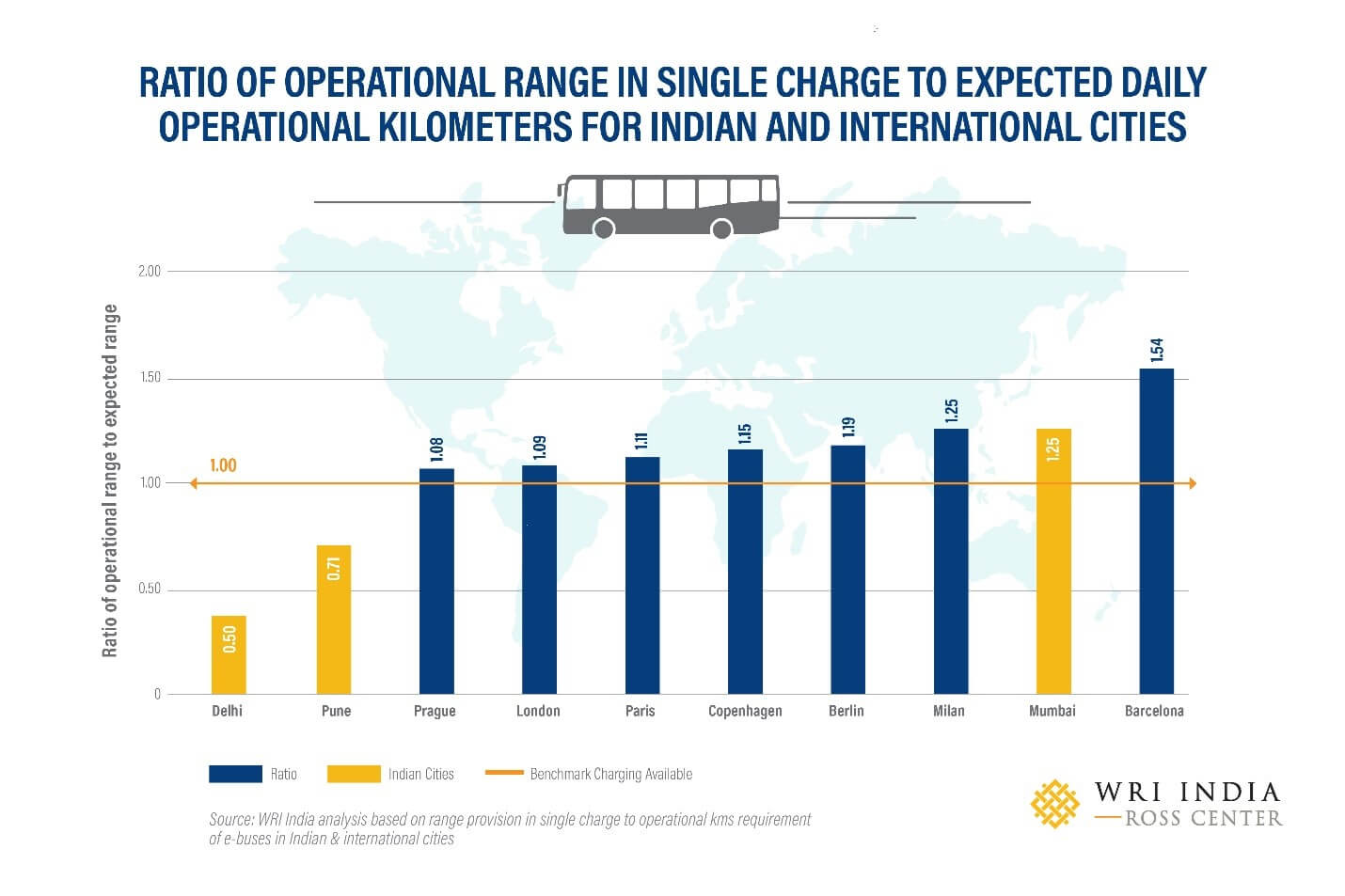
Way Forward for India
The ratio of operational range offered by an e-bus in a single charge (kilometers) to daily operational kilometers is indicative of the operational planning required for cities. Most international cities have opted for 12-m e-buses with a battery capacity of 324-350 kWh to last for full-day operations. Cities like Berlin, Prague and Vienna, which have planned for opportunity charging, have a provision of pantograph charging with 6-8 minutes charging per cycle on the routes or terminals.
Cities around the world prefer to use batteries that last all day or have a provision for multiple opportunities for charging on routes via pantographs or similar technologies. Consequently, a large battery size and opportunity charging time will be necessary to provide cities with flexibility for scheduling their e-bus operations and achieve 1:1 replacement of internal combustion engine (ICE) buses.
Sanjay Bhatia is a senior consultant with the Sustainable Cities & Transport Program at WRI India. Views expressed are personal.
